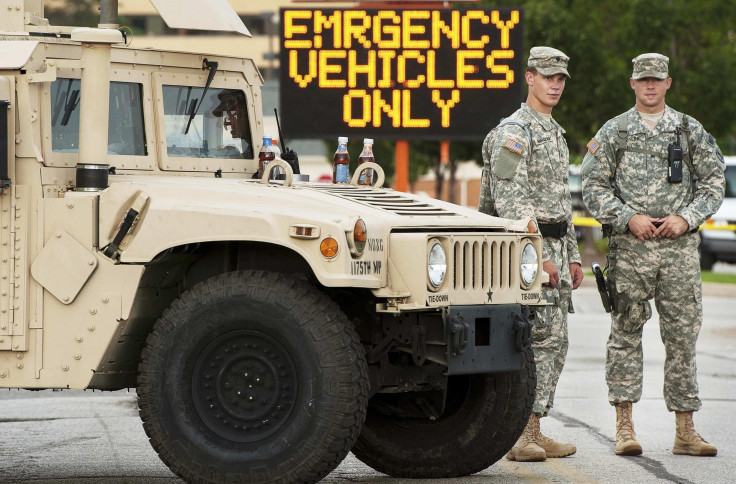Michael Brown Shooting: Missouri National Guard Called Protesters ‘Enemy Forces,’ ‘Adversaries’

The government response to the protests and riots that erupted after the Aug. 9, 2014, killing of Michael Brown in Ferguson, Missouri, faced a barrage of criticism from civil rights activists. The response was heavy-handed and exacerbated an already tense situation, they said.
Now, internal mission briefings by the National Guard obtained by CNN show the guardsmen referring to protesters as “enemy forces” and “adversaries," the kind of militarized language more appropriate for combat missions in Baghdad than riot-control operations in an American suburb of 21,000 people.
The communications obtained through a Freedom of Information Act request clearly show that the National Guard was concerned about the public’s reaction to the deployment of troops to perform civil security operations typically handled by law enforcement.
"We have coordinated for lower profile, less confrontation likely mission sets to emphasize support roles and minimize public militarization perception," Col. David Boyle, Army chief of staff at the Missouri National Guard, told his officers in a Nov. 18 email, six days before a St. Louis County grand jury decided not to indict Officer Darren Wilson, believing he gunned down Brown, 18, in an act of self-defense.
One of the documents showed that troops were instructed to be on the watch for what the National Guard was characterizing as hate groups, including the New Black Panther Party, the KKK and “general protesters,” which were all described as “enemy forces.”
Other documents show National Guard officers ordering their men to cease describing protesters as the enemy, indicating concern among higher-ups that the language was inappropriate in this context. One document shows Boyle describing the language as "potentially inflammatory." Commanding officers later replaced the word “enemy” with “criminal elements,” referring to the rioters who looted stores and damaged property after the killing and again after Wilson was exonerated.
National Guard Capt. John Quinn defended the language to CNN, saying it was part of “generic military planning” used by all branches of the armed forces.
The National Guard didn’t receive as much criticism as local police officers, and in some cases were decried for not reacting soon enough to protect shops that were vandalized and looted. The National Guard’s mission was to secure areas of unrest while police officers were supposed to make arrests of looters and vandals.
Twelve days after the Brown shooting, Missouri Gov. Jay Nixon deployed National Guard troops to quell what he said were “outside instigators interfering with peaceful protesters.” The Brown case was one of several highly publicized incidents of black men and boys being killed by white policemen that has reignited a long-running national debate over how police officers treat African American males, from racial profiling during traffic stops to inappropriate use of lethal force.
© Copyright IBTimes 2024. All rights reserved.






















